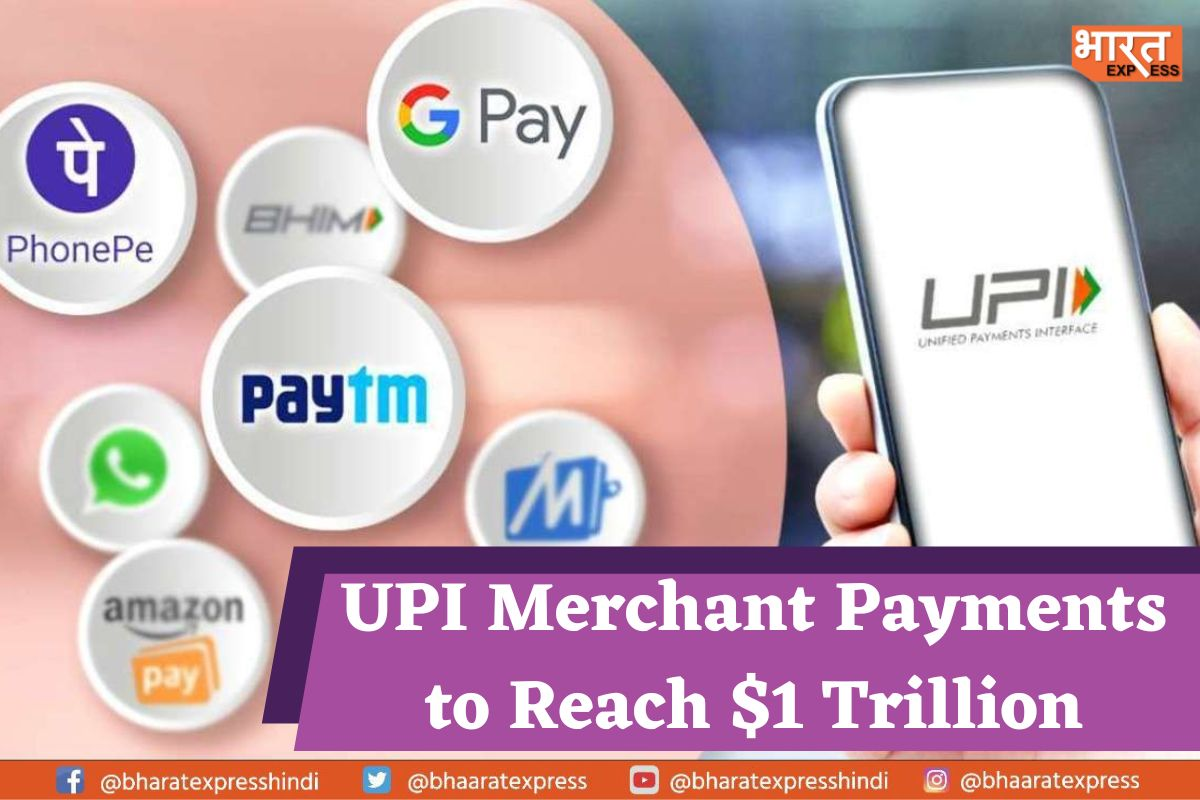
REFRENCE IMAGE
Unified Payments Interface (UPI) merchant payments are projected to achieve $1 trillion by FY26, fueled by a growth rate of 40 to 50%. This is stated by the Bain and Company’s “Future of India Retail Payments” report which was released on Thursday.
The increase in merchant payments on Unified Payments Interface (UPI) is expected to be driven by several factors, including greater awareness, the growth of merchant acceptance of UPI, and new payment features such as UPI Lite and UPI 123 Pay. Additionally, the opening of international payment corridors on the domestic payment railroad is also expected to contribute to growth. According to data from the National Payments Corporation of India, UPI merchant transactions worth approximately $40 billion were settled in March 2023, indicating a $500 billion payment run rate.
Additinaly, the report mentioned that UPI and mobile wallets’ share of the $3.2 trillion digital payments market is expected to increase from 11% in FY22 to 28% in FY26. As digital payment modes, including credit cards, debit cards, and buy now, pay later, continue to grow, cash is projected to decline from 69% in FY22 to 48% in the future. Bain & Company’s Rakesh Pozhath praised India’s creation of a non-cash economy, with UPI being a game-changer developed by NPCI.
Also Read: Federal Reserve Raises Rates by 25 bps, Suggests Pause in Tightening Cycle
India is leading the way in creating a non-cash economy and is outpacing many other emerging economies with the help of UPI, a game-changer by NPCI, according to Rakesh Pozhath, partner at Bain & Company. He added that Brazil is learning from India’s UPI to promote inventions in Pix which is its own real-time payments system. The report also predicts that by FY26, credit card spends will grow2.5 times to$ 280 billion from around$ 100 billion presently, driven by an increase in spends through new credit cards that will get issued.
A new report by Bain & Company predicts that credit card spends will grow to $280bn by FY26, 2.5 times its current value, due to an increase in the number of new credit cards issued, among other factors. The report also suggests that India’s non-cash economy is outpacing other emerging economies, helped by its game-changing Unified Payments Interface (UPI). By FY26, the share of UPI and mobile wallets in the digital payments pie will rise to 28% from 11% in FY22, and cash will fall to 48% from 69% in FY22. Point of sales terminals are expected to double to 13 million by FY26. It is driven by Android PoS and softPoS terminals.
Android terminals and SoftPoS terminals are expected to drive the growth in payment form factors in India. Regulatory interventions such as mandatory tokenization of cards, data localization, data protection norms, and strict requirements for payment aggregators could initially create hiccups for fintech startups, but eventually lead to a better consumer protection culture.
In the coming three to five times, Bain and Company has prognosticated that there will be a reduction in government subventions for payments, which will lead to request forces decreeing pricing around trafficker payments.
Also Read: Zerodha CEO Nithin Kamath’s Friend Gets Scammed And Loses Rs 5 Lakh
The report suggests six alternate revenue opportunities for payment fintechs, including unsecured retail credit, working capital for merchants, commerce-related offerings, and more. Omnichannel is seen as the next major growth opportunity for payment fintechs, and companies like Razorpay, Cashfree, and Paytm have set up their offline businesses to provide users with an omnichannel payment experience.
Furthermore, the report suggests that banks must keep up with fintechs by exploring full-stack merchant solutions, expanding their credit card base, and commercializing partnerships with non-banks to expand their reach. Fintechs, on the other hand, must build compliance functions, double down on revenue diversification, and strengthen their partnerships with banks and NBFCs to speed up their go-to-market.
To read more such news, download Bharat Express news apps





















